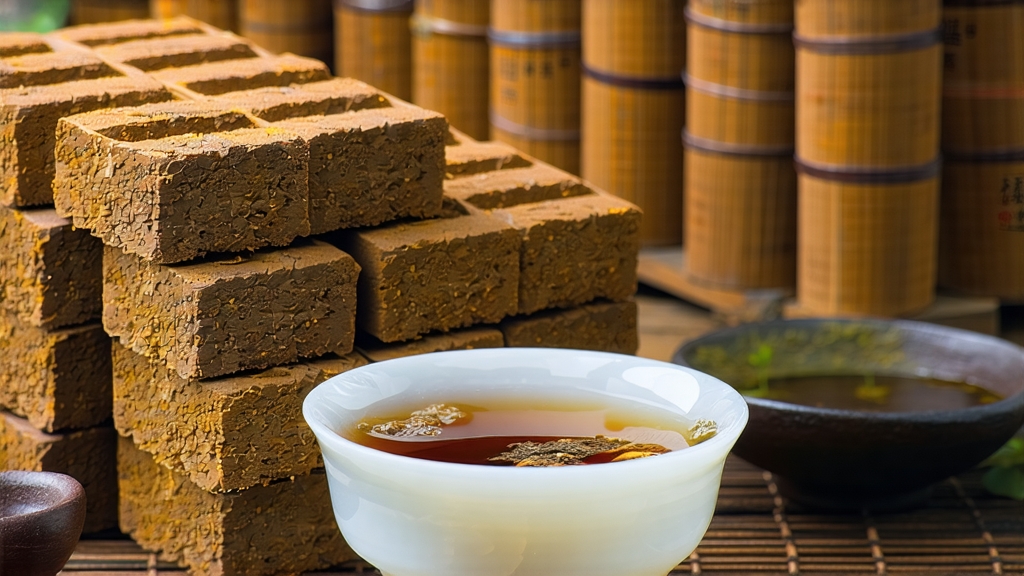
Tucked away in the subtropical mountains of southern China’s Guangxi Zhuang Autonomous Region, Liu Bao tea has spent four centuries perfecting the art of graceful aging. To most outsiders the word “dark tea” conjures images of Yunnan’s pu-erh, yet Liu Bao is the older, quieter sibling whose history predates the famous cakes of the southwest by at least a hundred years. Once the ballast of merchant junks sailing the Pearl River to Hong Kong and then on to Southeast Asia, Liu Bao was the everyday beverage of dockworkers, tin miners and, later, the favored digestive of grandmothers in Kuala Lumpur. Today the same leaves that cooled laborers under tropical suns are winning trophies in Brussels tea competitions, their mellow liquor praised for notes of red dates, wet earth and a cooling camphor finish that lingers like a forest after rain.
Liu Bao is not a single cultivar but a place-defined style. The name simply means “Six Forts,” a cluster of villages in Wuzhou prefecture where the tea was first compressed into 40-kilogram bamboo baskets for river transport. Within that micro-region three leaf grades are recognized: special grade (tiao zhuang), first grade (yi ji) and third grade (san ji), determined by the ratio of buds to mature leaves at harvest. Farmers pluck the standard southern-China trio of Camellia sinensis var. sinensis—Da Ye Zhong, Bai Ye Zhong and the local Xiao Ye Zhong—between Qingming and Grain Rain when the monsoons fatten the leaves but before the summer heat turns them fibrous. The real identity of Liu Bao, however, is forged not in the field but in the piling room, where a unique double fermentation turns green fresh leaves into a tea that improves for decades.
The craft begins like any green tea: a short outdoor withering, a 200 °C tumble in a heated drum to kill green enzymes, then rolling to bruise the cells. What happens next is the “wet pile” (wo dui), a Guangxi invention that predates the 1973 Yunnan process by at least three centuries. Workers rehydrate the leaf to 28 % moisture with mountain spring water, heap it 70 cm deep on bamboo mats, cover it with jute sacks and let thermophilic microbes raise the core temperature to 55 °C. Every five days the pile is turned, sprayed and re-covered; after 25–30 days the leaf has turned walnut-brown and smells of damp bark and sweet soy. A second, slower fermentation follows: the tea is steamed, compressed into 40 kg baskets lined with fresh bamboo bark, then stacked in riverside warehouses where humidity hovers at 85 %. Here, for a minimum of three years and often for thirty, ambient molds and yeasts continue to nibble at polyphenols, swapping astringency for the famous chen xiang—“aged aroma.” The bamboo lining breathes, imparting a subtle green-grass note that distinguishes Liu Bao from the earthy heaviness of pu-erh.
Brewing Liu Bao is refreshingly forgiving, a virtue that endeared it to sailors who had only kettles and tin cups. Start with 5 g of leaf for 120 ml, but do not treat it like a delicate green: bring the water to a rolling boil, rinse once to wake the compressed strands, then steep 10 s, 15 s, 20 s, adding five seconds each infusion. A well-aged basket tea will yield twelve rounds before its bass line fades. Traditional Guangxi households prefer the “gaiwan slap”: after the fifth infusion they replace the lid, invert the gaiwan and give it a sharp tap on the table, loosening the inner leaves so the next pour extracts the hidden heartwood. In dim-sum restaurants the same leaves are often boiled for three minutes with a sliver of rock sugar and served in thick white cups whose rounded rims amplify the tea’s natural sweetness.
Tasting Liu Bao is a vertical journey from dark fruit to forest floor. First sniff the gaiwan lid while still hot: top notes of longan and dried lychee should float above a deeper resinous camphor. The liquor, the color of black cherry, should coat the tongue like light syrup; swallow and a cooling sensation rises at the back of the throat, the famous liang gan that Chinese medicine credits with clearing damp heat